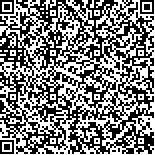| 引用本文: | 李云,张科,袁恒杰,李正翔.基于FAERS分析比较英夫利昔单抗、乌司奴单抗和维得利珠单抗用于炎症性肠病治疗的安全性[J].中国现代应用药学,2024,41(19):79-88. |
| Li Yun,Zhang Ke,Yuan Hengjie,Li Zhengxiang.Comparative analysis of the safety profiles between infliximab, ustekinumab, and vedolizumab in the treatment of inflammatory bowel disease based on FAERS[J].Chin J Mod Appl Pharm(中国现代应用药学),2024,41(19):79-88. |
|
| |
|
|
| 本文已被:浏览 672次 下载 348次 |

码上扫一扫! |
|
|
| 基于FAERS分析比较英夫利昔单抗、乌司奴单抗和维得利珠单抗用于炎症性肠病治疗的安全性 |
|
李云1, 张科2, 袁恒杰2, 李正翔2
|
|
1.天津医科大学总医院;2.天津医科大学总医院药剂科
|
|
| 摘要: |
| 摘要:目的 挖掘英夫利昔单抗、乌司奴单抗和维得利珠单抗不良事件(AE)风险信号,探索三者用于炎症性肠病(IBD)治疗的安全性差异,以期为IBD新型生物制剂的临床合理使用提供参考。方法 收集2004年第1季度至2022年第4季度的FAERS数据,经去重、《ICH国际医学用语词典》(MedDRA,26.0版)标准化后,限定提取IBD背景人群,在此基础上分别筛选以英夫利昔单抗、乌司奴单抗和维得利珠单抗为首要怀疑药物的AE报告,采用报告比值比法(ROR)联合贝叶斯可置信区间递进神经网络法(BCPNN)挖掘分析三种药物的AE信号,并做统计分析。结果 共提取到以英夫利昔单抗为首要怀疑药物的AE报告70508份,生成信号数460个,以乌司奴单抗为首要怀疑药物的AE报告18121份,信号数193个,以维得利珠单抗为首要怀疑药物的AE报告34270份,信号数235个。3种药物AE报告中,女性均多于男性,患者年龄主要集中在18~65岁,以18~45岁人群为主,以美国和加拿大数量最多。3种药物严重AE均为其他重要医学事件、住院或住院时间延长和死亡,其中维得利珠单抗报告了更严重的AE发生率。3种药物AE累及系统器官分类(SOC)情况相似,均会增加机会性感染风险,肿瘤发生风险,各类检查异常风险,全身性疾病及给药部位发生反应风险,但各主要SOC项下的高强度首选术语(PT)及高ROR信号强度AE存在差异。挖掘到的3种药物新的可疑AE信号不同,英夫利昔单抗的发育异常信号、乌司奴单抗的肝毒性及维得利珠单抗对肾脏、眼、神经、营养代谢及肌肉的不利影响需引起临床重点关注。结论 英夫利昔单抗、乌司奴单抗和维得利珠单抗PT、高ROR信号强度AE存在差异,临床在使用生物制剂治疗IBD的过程中,应充分结合患者个体情况进行差异化给药。 |
| 关键词: 英夫利昔单抗 乌司奴单抗 维得利珠单抗 炎症性肠病 不良事件 信号比较 |
| DOI: |
| 分类号:R963.3?????? |
| 基金项目:天津市卫生健康科技项目 |
|
| Comparative analysis of the safety profiles between infliximab, ustekinumab, and vedolizumab in the treatment of inflammatory bowel disease based on FAERS |
|
Li Yun,Zhang Ke,Yuan Hengjie,Li Zhengxiang
|
|
Department of Pharmacy, General Hospital, Tianjin Medical University
|
| Abstract: |
| ABSTRACT: OBJECTIVE Unearthing the adverse events (AE) risk signals associated with infliximab, ustekinumab, and vedolizumab, and to explore the differences in safety profiles among these three biologic agents used in the treatment of inflammatory bowel disease (IBD), which could provide valuable insights for the clinical rational use of these novel biologics in IBD management. METHODS Obtaining FAERS data from the first quarter of 2004 to the fourth quarter of 2022, after deduplication and standardization using the Medical Dictionary for Regulatory Activities (MedDRA, version 26.0), AE reports specific in the background population with IBD were firstly extracted, and subsequently these reports with infliximab, ustekinumab, and vedolizumab as primary suspected drugs were following screened respectively. Then, the signal mining and analysis using the reporting odds ratio (ROR) combined with the bayesian confidence propagation neural network (BCPNN) methods were finally performed to assess the identified signals. RESULTS A total of 70,508 AE reports associated with infliximab as the primary suspected drug were extracted, resulting in 460 signal occurrences. For ustekinumab, there were 18,121 AE reports with 193 signal occurrences. As for vedolizumab, there were 34,270 AE reports with 235 signal occurrences. Among the AE reports for these 3 biologics, the majority were reported by females, and the age of patients was primarily concentrated between 18 and 65 years, with the main age group being 18-45 years. The highest number of reports originated from the United States and Canada. The severe AE for all 3 drugs contained other important medical events, hospitalization, prolonged hospital stay, and death. Among them, vedolizumab reported a higher incidence rate of severe AE. The 3 biologics had similar system organ class (SOC) profiles, all of which increased the risk of opportunistic infections, tumor occurrence, various examination abnormalities, systemic diseases, and reactions at the administration site. However, there were differences in the high-intensity preferred terms (PT) and high ROR signal intensity AE under each major SOC category. The newly identified potential AE signals for the 3 drugs were different. There was a signal for developmental abnormalities withinfliximab, hepatotoxicity with ustekinumab, and adverse effects on the kidneys, eyes, nervous system, nutritional metabolism, and muscles with vedolizumab. These findings warranted clinical attention. CONCLUSION The differences in PT, high ROR signal intensity AE of infliximab, ustekinumab, and vedolizumab indicated the need for individualized dosing in the clinical use of biologics for treating IBD, taking into account the specific circumstances of each patient. |
| Key words: infliximab ustekinumab vedolizumab inflammatory bowel disease adverse events signal comparision |
|
|
|
|
